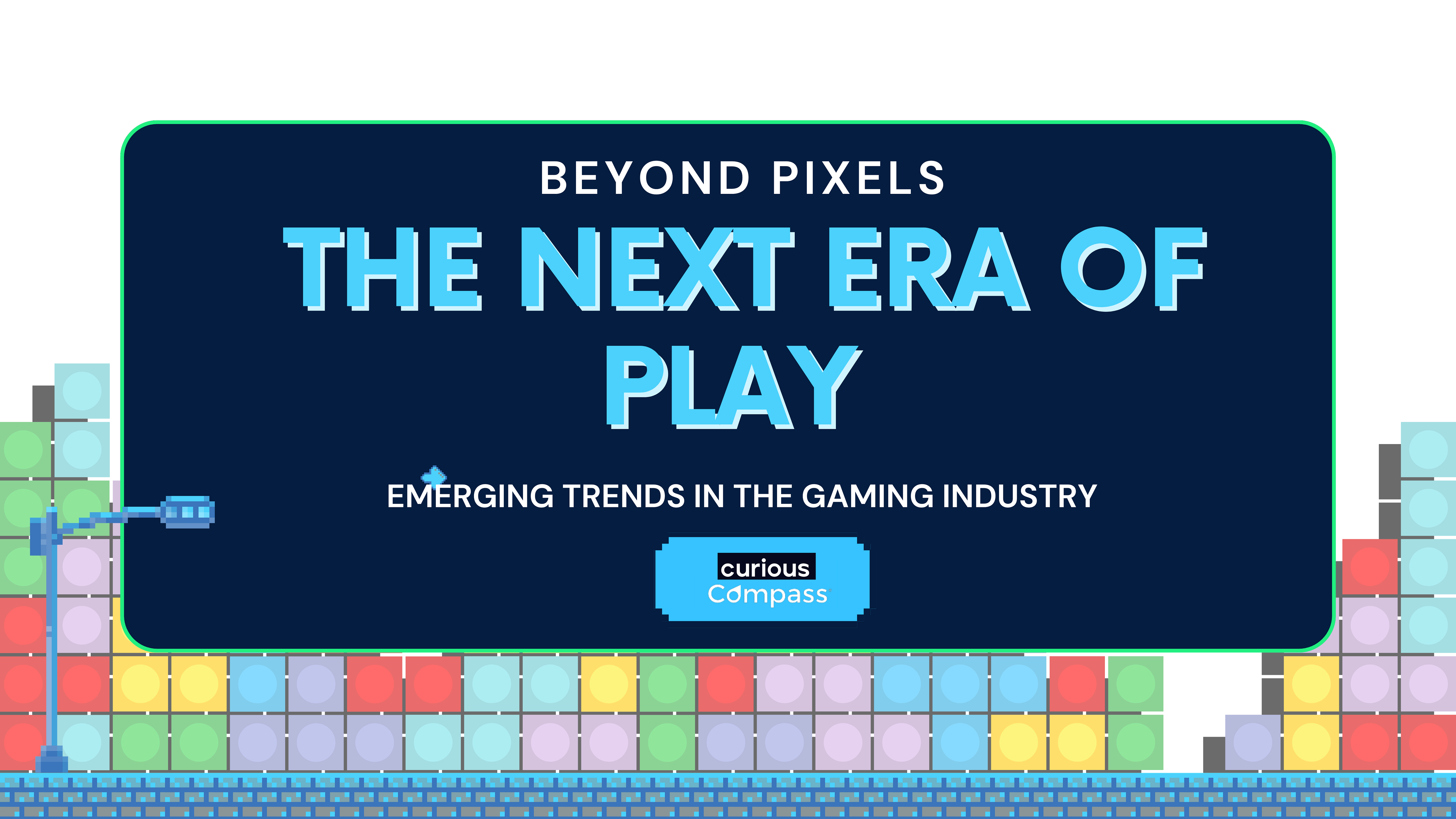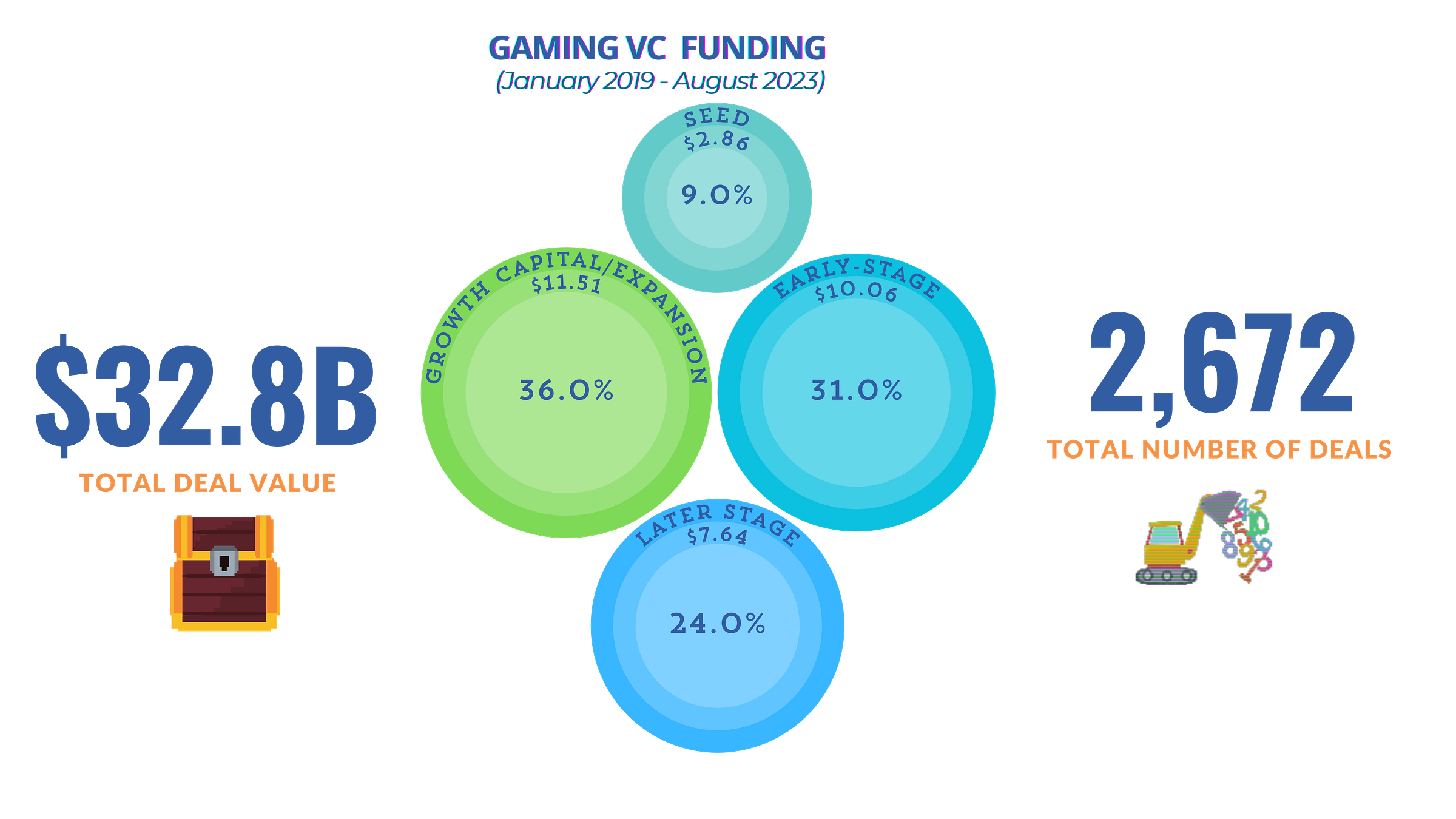In the rapidly evolving digital landscape, the gaming industry stands as a beacon of innovation. Propelled by advanced technologies, customer demand for unique experiences, and rocketing mobile device usage, a new era is emerging for gamers and developers alike. The convergence of AI, immersive realities, and mobile accessibility is reshaping the gaming world, defining a promising and exciting future. Let's dive into how these pivotal elements are transforming the way we game.
Key Drivers
Technology Proliferation
Innovations in gaming are driven by cutting-edge technology such as AI, blockchain, and cloud computing, which are ushering in new methods of game development and business strategies.
The evolution of hardware, particularly in regard to graphical processing units (GPUs) and high-definition displays, is fueling the creation of visually stunning games.
Smartphone and internet penetration
The prevalence of smartphones, in tandem with cost-effective data packages, has sparked a significant surge in mobile gaming.
The availability of high-speed internet is boosting the expansion of cloud gaming and enhancing multiplayer experiences.
Demand for immersive experiences
Gamers are progressively seeking more engaging experiences characterized by lifelike graphics and audio.
This demand for deeper immersion is driving the creation of rich and immersive gaming worlds.
Gamified engagement
The incorporation of gamification methods in non-gaming platforms, like education and fitness, is broadening the scope of the gaming industry.
This approach allows creators to apply game-centric monetization tactics, thereby ramping up player engagement and improving user retention.
New monetization opportunities
An upswing in the popularity of casual games has prompted innovative methods of monetization, encompassing play-to-earn and pay-to-win business models.
The integration of microtransactions and a growing interest in digital gaming collectibles have unveiled fresh avenues for game developers.
State of the Gaming Industry
Venture capitalists are significantly supporting gaming startups that are driving progress in areas such as AI, immersive tech, mobile gaming, and esports, thereby accelerating their growth.
Startup stage funding
Seed and early-stage funding accounted for nearly $13.4 billion.
Notable big deals
In September 2021, the gaming-oriented voice communication platform 'Discord' gathered $500 million in a round of venture capital led by Dragoneer Investment Group, while 'Sorare,' a fantasy sports platform, procured $680 million in a series B venture capital round led by SoftBank.
Recent VC investments are increasingly favouring innovative startups that are focused on current trends
Trend: AI in Gaming
August 2023: $50 million, VC funding
Trend: Mobile gaming
July 2023: $50 million, VC funding
Trend: Fantasy gaming
July 2023: $35 million, Series A2
Trend: Blockchain gaming
July 2023: $15 million, VC funding
Trend:Immersive gaming
Feb 2023: $10 million, Series A
Trend:Esports
March 2022: $12 million, Series A
Trends and shifts shaping the gaming industry
AI in Gaming
AI is revolutionizing game testing by automating processes, developing smart NPCs, and streamlining the creation of graphics. This shift is being driven by technologies such as machine learning, generative AI, data analytics, and natural language processing.
Blockchain in Gaming
Blockchain gaming is revolutionizing the ownership, security, and player experiences in the gaming industry. Startups are leveraging NFTs, smart contracts, cryptographic tokens, and distributed ledgers to provide players with the ability to trade, create, and earn value within virtual worlds.
Cloud Gaming
Cloud gaming is transforming the gaming industry by offering instant access to games and diminishing the demand for high-performance local hardware, by making use of technologies like content delivery networks (CDNs), video compression, edge computing, and data encryption.
Esports
Esports has developed into a worldwide sensation with a huge following and profitable prospects. It has uncovered a new spectrum of business opportunities, ranging from gaming analysis and coaching to betting and event management.
Fantasy Gaming
Fantasy gaming incorporates the formation of virtual teams comprising real athletes, with points earned based on these athletes' performance in the real world. Moreover, it could also include trading and betting on results in numerous kinds of fantasy or virtual gaming competitions.
Gamification
Gamification applies game-related techniques and elements to boost involvement and enthusiasm in areas outside of gaming, like finance and healthcare. By introducing components like points, incentives, and obstacles, it makes activities and education more captivating.
Mobile Gaming
Mobile gaming is on the rise, offering players the chance to game on their phones and tablets. The growth in smartphone ownership and use, improved cellular network speeds, and enhanced mobile chip technology are propelling this trend in gaming.
XR Gaming
XR gaming is offering game experiences that meld the real and virtual realms. Emerging companies are crafting and generating revenue from deeply immersive virtual environments and location-specific XR adventures.
Headwind and Outlook
Challenges
Platform fragmentation
Resource balance: Allocating resources efficiently across multiple platforms for consistent quality.
Adaptive UI/UX: Tailoring interfaces for each platform while maintaining a cohesive user experience.
Increasing game complexity
Player expectations: Increasing demands for richer gameplay experiences from players.
Technical infrastructure: Optimizing server performance, minimizing latency, and ensuring seamless multiplayer experiences in complex games.
Intellectual property concerns
Piracy risks: Lack of resources to implement strong anti-piracy measures.
Copycat games: Larger companies might create similar games quickly, making it hard for startups to protect their unique ideas.
Limited distributors for mobile
Dependency on App stores: Reliance on a few major app stores for game distribution.
Tough competitive environment: Difficulty in standing out among the multitude of mobile games available.
Legal regulations
Navigating international regulations: Tackling differing international regulations for game content and distribution.
Compliance with evolving laws: Ensuring compliance with intellectual property laws and increasing consumer protection regulations.
Gaming Growth Fueled by Tech Advances
By 2030, the industry's revenue is projected to hit $470 billion, growing at a steady 10% CAGR.
Emerging patterns like mobile and cloud gaming will significantly drive this surge.
These shifts are revolutionizing player interaction, marking a pivotal period in digital entertainment by harmoniously merging tech and gaming.
Cloud gaming outlook for 2030:
Predicted to lead in growth with a 39% CAGR.
Anticipated to generate $30 billion in earnings.
Its portion of the global gaming software market's revenue is set to rise to 6%.
Mobile gaming outlook for 2030:
Projected to surpass $272 billion in earnings.
Set to constitute around 58% of the entire gaming software sector.
Poised to lead the gaming realm, particularly in casual and non-competitive segments.
The gaming software sector is set for consistent expansion, capitalizing on technological advancements and the growing opportunities from mobile and cloud gaming's ascent.





















